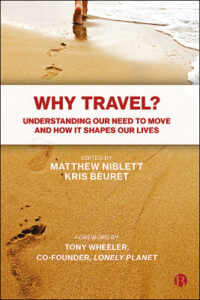Is pilgrimage ‘costing the Earth’?
5th November 2014
In October, nearly 3 million Muslims congregated in Mecca for this year’s Hajj – with approximately two thirds of those pilgrims travelling from outside Saudi Arabia. The rise of low-cost air travel and organised pilgrimage tours is making the Hajj more accessible for pilgrims, enabling more Muslims than ever to fulfil what is one of the five pillars of their faith. The sheer number of people who now partake in Hajj, however, also highlights a crucial issue about mass travel: large scale movement of people has large environmental impacts, both in terms of the carbon produced in transporting them and the impacts on pilgrimage sites and host areas. Mecca, being located in a desert ecosystem, suffers particularly from water stress; air pollution also exceeds recommended safe levels during the pilgrimage. One Al-Jazeera journalist advised recently that ‘pilgrims – particularly those who live far from Saudi Arabia – should consider the ecological damage caused every time they fly several thousand miles to Mecca. The Muslim Prophet only completed Hajj once and if a single trip was adequate for him, it should be sufficient to those who wish to mirror him.’¹
But this issue is far from limited to Hajj; next year, ten million pilgrims are expected to descend on Nashik in India for the Hindu pilgrimage of Kumbh Mela. With an estimated 200 million people going on pilgrimage every year worldwide,² how to reconcile this fundamental act of worship with the need to care for the pilgrimage destination and the planet we live on is an area of concern to those of many different faiths. Many religious followers are trying to raise awareness within their communities of this increasingly important issue by developing networks and guidance for greener pilgrimages (see, for example, http://greenpilgrimage.net).
In an ever-more populated world, these issues are of crucial importance for all human travel: how best can we balance the inherent trade-off between the benefits of travel (psychological, cultural, spiritual and economic) and the huge toll it can take on the natural environment? The ITC believes that a better understanding of why we travel – at a fundamental level – will help us to better manage that travel so that we can fulfil our needs and desires without irrevocably damaging our environment’s ability to support us. The ITC’s Why Travel? Project examines the motivations underlying human travel by looking back to our evolutionary origins, as well as to the present and into the future, combining insights from biology, psychology, anthropology, literature, philosophy and more. You can follow up on what we’ve been discovering at www.whytravel.org
1. http://www.aljazeera.com/indepth/opinion/2011/03/20113221445229564.html
2. According to the Alliance of Religions for Conservation (ARC) the figure of 200 million people going on pilgrimage every year is probably a large underestimate.


